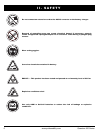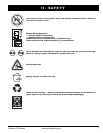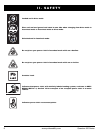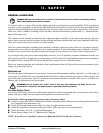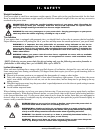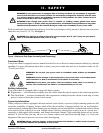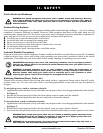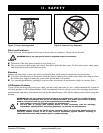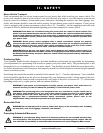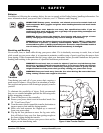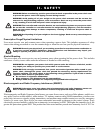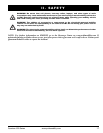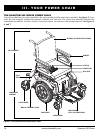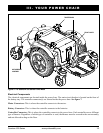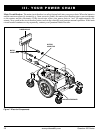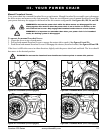
14 www.pridemobility.com Quantum 600 Series
Motor Vehicle Transport
Pride recommends that you do not remain seated in your power chair while traveling in a motor vehicle. The
power chair should be stowed in the trunk of a car or in the back of a truck or van with batteries removed and
properly secured. In addition, all removable power chair parts, including the armrests, seat, front riggings, con-
troller, and shrouds should be removed and/or properly secured during motor vehicle transport. If your power
chair is equipped with a transit securement system, refer to IV. “Assembly” and the supplement provided with
your power chair for additional information regarding power chair transport in a motor vehicle.
WARNING! Pride does not recommend using the power chair as a seat in a motor vehicle. The
power chair user should transfer into the vehicle seat and use the vehicle-installed belt restraint
system if and whenever feasible. If your power chair is equipped with a manufacturer-installed
transit securement system, please refer to the supplemental safety information provided with
your power chair.
WARNING! Ensure power chairs equipped with a transit securement system are properly
secured to the motor vehicle during transport. Power chairs that are not properly secured can
become a hazard to the user and to other vehicle passengers in the event of a crash, sudden
stopping, or swerving, as the power chair could tip or slide out of place.
WARNING! Always be sure your power chair and its batteries are properly secured when it is
being transported. Batteries should be secured in an upright position and protective caps should
be installed on the battery terminals. Batteries should not be transported with any flammable or
combustible items.
Positioning Belts
Your Quantum Rehab Provider, therapist(s), and other healthcare professionals are responsible for determining
your requirement for a positioning belt in order to operate your power chair safely. The positioning belt is not
designed for use as a restraining device in a motor vehicle. You should be properly belted into seats approved by
the vehicle manufacturer with your power chair properly stowed for vehicle transport or secured using an optional
transit securement system.
Positioning belts should be installed as detailed in this manual. See V. “Comfort Adjustments.” Once installed,
the belt should be placed across the pelvis as determined by your healthcare provider. Anchor points of the posi-
tioning belts should be located so that a projected side-view angle of the pelvis is between 45°–75° of horizontal
depending on the user’s weight, posture, and seat cushion thickness.
WARNING! If you require a positioning belt to safely operate your power chair, make sure it is
fastened securely in order to reduce the possibility of a fall from the power chair.
WARNING! The positioning belt is not designed for use as a seat belt in a motor vehicle. Nor is
your power chair suitable for use as a seat in any vehicle. Anyone traveling in a vehicle should
be properly belted into seats approved by the vehicle manufacturer. If your power chair is
equipped with a manufacturer-installed transit securement system, please refer to the
supplemental safety information provided with your power chair.
Removable Parts
WARNING! Do not attempt to lift or move a power chair by any of its removable parts, including
the armrests, seat, front riggings, controller, and shrouds.
Preventing Unintended Movement
WARNING! If you anticipate being seated in a stationary position for an extended period of time,
turn off the power. This will prevent unexpected motion from inadvertent joystick contact. This will
also eliminate the possibility of unintended chair movement from electromagnetic (EM) sources.
II. SAFETY



